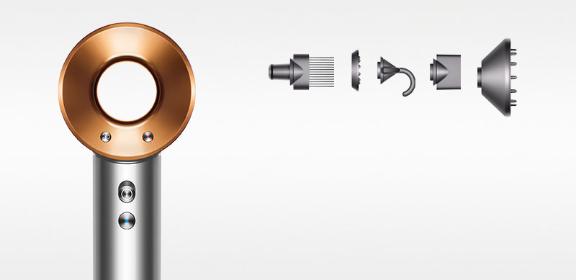Hair. Our healthy obsession.
We’ve tested 1,010 miles of real hair, from its structure to airflow dynamics, in our state-of-the-art laboratories. Because the more we understand hair, the better we can help you look after it.
Engineered to help protect your hair
-
The science of colour loss
Whether your hair’s dyed or natural, it can change colour with heat. Find out how.
-
Smoother air means smoother hair
Discover how airflow affects your hair’s smoothness.
Inside Dyson Hair Laboratories
Our obsession with hair has led us to create one of the most sophisticated hair laboratories in the world. Everything we learn informs our engineering decisions.
-
Real hair, not just cloth
By challenging convention, we uncovered the role velocity plays in the hair drying process.
-
Pulling things apart
The tensile test measures hair strength. Discover how extreme heat weakens the hair.
-
Testing the water
See how damaged hair absorbs water more quickly than healthy hair, which can weaken it.
The science behind style
-
The science behind shine
Our obsession with hair led us to go above and beyond to understand shine, what effects it, and why we created a hair dryer to help protect it.
-
The science behind frizz
Damaged hair absorbs water quickly, causing strands to swell, creating frizz. That’s why we engineered a hair dryer with intelligent heat control.
Our journey to redefine hair care has helped us to challenge common misconceptions about the health of hair.
-
The power of airflow
Does higher hair dryer wattage really mean more powerful airflow? Discover the science behind the myth.
-
The cold truth
It's said that rinsing your hair with cold water will make it shine. But that's not science. Let us show you why.
Did you know?
-

The life cycle of a hair is typically 2 to 7 years.
-

Hair is the second fastest replicating tissue in the human body.
-

A style will drop out faster if you overdry the hair.
-

The average human head has 80,000 to 150,000 hairs.
-

Hair can't heal once damaged, so it's important to protect it.
-

Hair is typically 79% keratin, 17% water and 4% fats, oils and pigments.
























